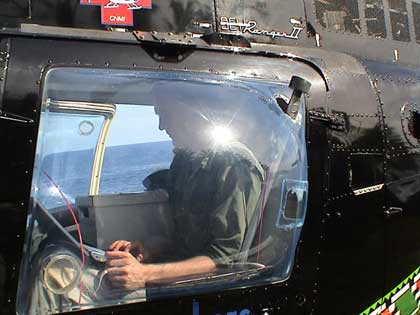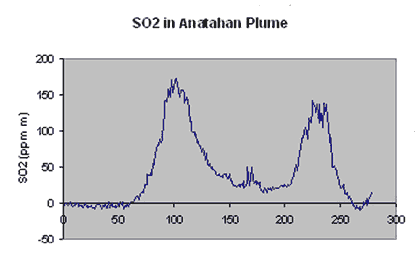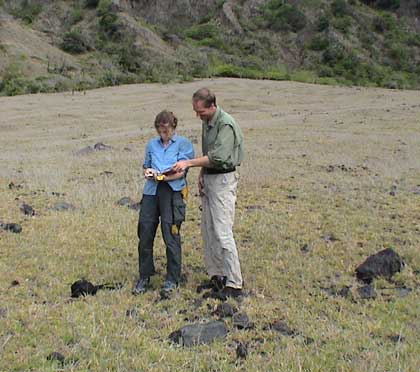

| the expedition | |
| the science | |
| tools & techniques | |
| marianas history | |
| daily journal | |
| the team | |
| questions & answers | |
|
the islands Saipan Anatahan Sarigan Guguan Alamagan Pagan Agrigan Asuncion Maug Uracas |
|
|||||||||||||||||||||||||||||||||||||||||||||||||||||||||||||||
Daily Journal
Day 9 | April 17, 2004
Anatahan
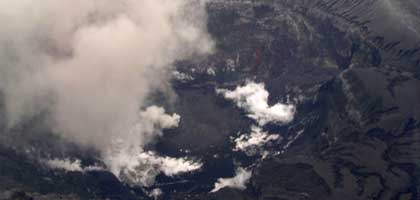
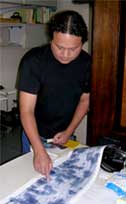 Ray Chong pointing at seismic events |
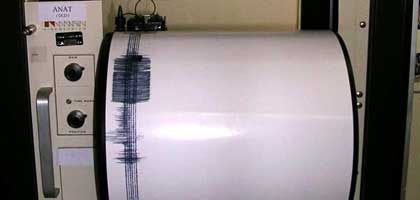

One of the goals of our expedition is to measure the gas emissions from the volcanoes using the mini-DOAS. We mounted the mini-DOAS on the helicopter, pointing the telescope vertically out of the window. You can see the red fiber optics cable that leads from the telescope to the instrument. Toby is using a computer to record the data during the flight. We traversed under the volcanic plume and successfully made measurements of the SO2 emissions from the volcano. The graph below shows the increase in SO2 content as we flew under the plume. We did several traverses and we will use this data to calculate the flux of SO2 from the volcano and compare it with the amount we measured in May 2003, only ten days after the eruption. On our way back to Saipan, we briefly landed at a safe location on the eastern side of the island, refueled, checked our notes and returned to Saipan.
